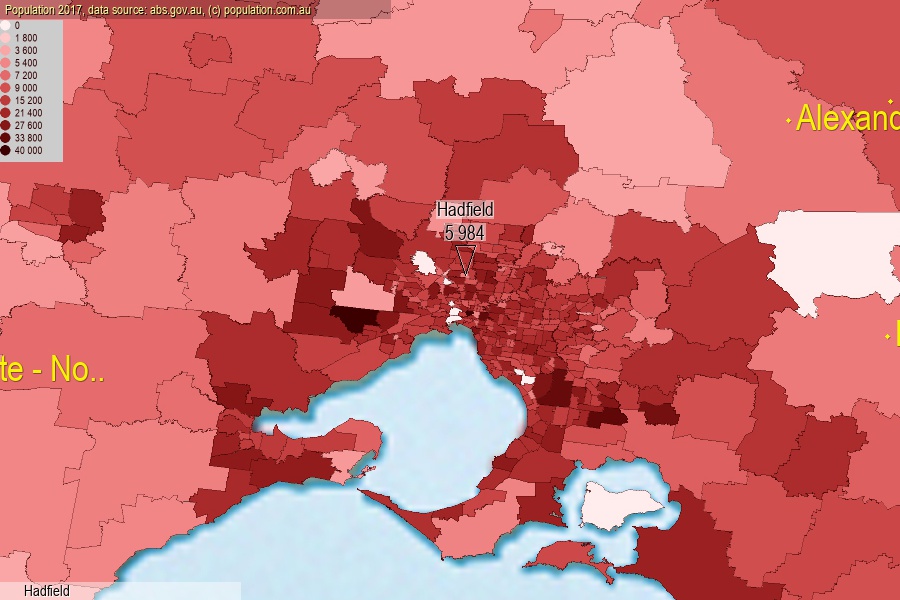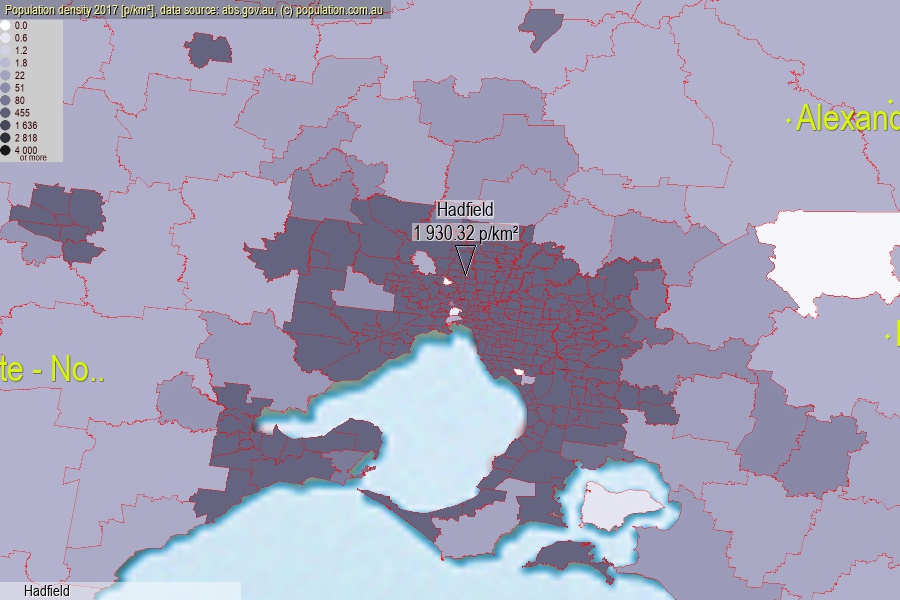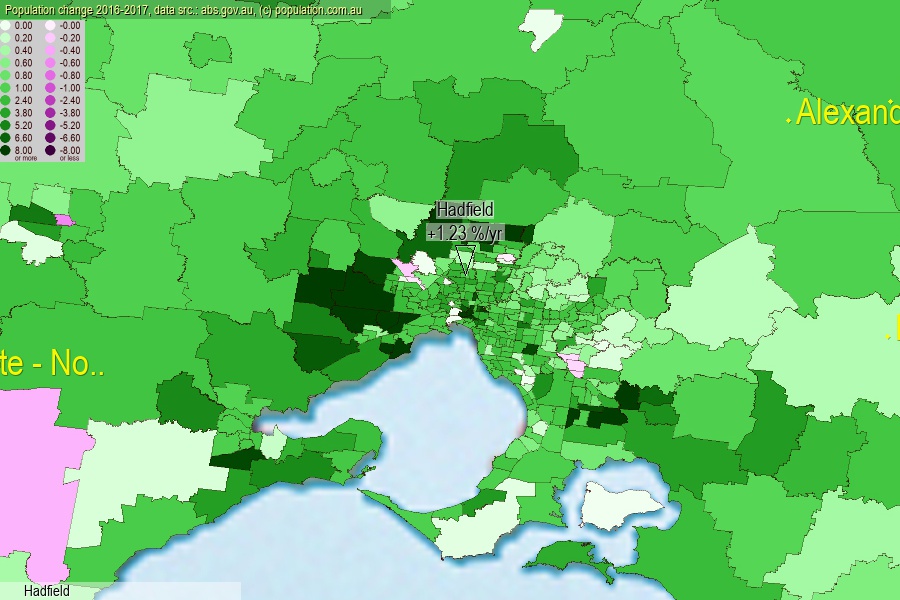 population.com.au
population.com.auLast official estimated population of Hadfield (as Statistical Area Level 2) was 5 984 people (on 2017-06-30)[2]. This was 0.02% of total Australian population and 0.093% of VIC population. Area of Hadfield is 3.10 km², in this year population density was 1 930.32 p/km² . If population growth rate would be same as in period 2016-2017 (+1.23%/yr), Hadfield population in 2025 would be 6 601. [0]



Click to enlarge. Hadfield is located in the center of the images.
Population [people], population density [p./km²] and population change [%/year] [2]
View borders » (new window) [4]
[2001-2002] -2.31 %/Yr.
[2002-2003] -1.76 %/Yr.
[2003-2004] -0.36 %/Yr.
[2004-2005] -0.68 %/Yr.
[2005-2006] +0.02 %/Yr.
[2006-2007] -0.04 %/Yr.
[2007-2008] +0.53 %/Yr.
[2008-2009] +0.99 %/Yr.
[2009-2010] +0.69 %/Yr.
[2010-2011] +0.49 %/Yr.
[2011-2012] +0.38 %/Yr.
[2012-2013] +1.00 %/Yr.
[2013-2014] +1.38 %/Yr.
[2014-2015] +1.34 %/Yr.
[2015-2016] +1.86 %/Yr.
[2016-2017] +1.23 %/Yr.
[0] Calculated with linear interpolation from officially estimated population
[1] Read more about SA2 and Australian Statistical Geography Standard (ASGS) on abs.gov.au
[2] Population data from Australian Bureau of Statistics (Population and density: 2017; change: 2016-2017)
[3] Digital Boundaries: Australian Statistical Geography Standard (ASGS) 2016.
[4] Border coordinates are simplifyed using Ramer-Douglas-Peucker algorithm.